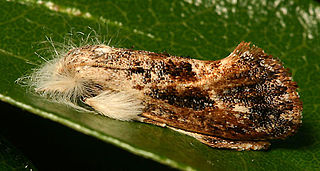
In Greek mythology, Icarus is the son of the master craftsman Daedalus, the creator of the Labyrinth. Icarus and his father attempt to escape from Crete by means of wings that his father constructed from feathers and wax. Icarus' father warns him first of complacency and then of hubris, asking that he fly neither too low nor too high, so the sea's dampness would not clog his wings nor the sun's heat melt them. Icarus ignored his father's instructions not to fly too close to the sun; when the wax in his wings melted he tumbled out of the sky and fell into the sea where he drowned, sparking the idiom "don't fly too close to the sun".
1566 Icarus, provisional designation 1949 MA, is an extremely eccentric asteroid, approximately 1.4 km (0.87 mi) in diameter. It is a near-Earth object of the Apollo group and the lowest numbered potentially hazardous asteroid. In 1968, it became the first asteroid ever observed by radar. Its orbit brings it closer to the Sun than Mercury and further out than the orbit of Mars, which also makes it a Mercury-, Venus-, and Mars-crosser. This stony asteroid and relatively fast rotator was discovered by German astronomer Walter Baade at the Palomar Observatory, California, on 27 June 1949. It was named after the mythological Icarus.

Acrolophus is a genus of moths in the family Acrolophidae, with, typically, great individual variation within species in color pattern, making field identification of many individuals difficult or impossible. It was described by Felipe Poey in 1832.
In astronomy a phase curve describes the brightness of a reflecting body as a function of its phase angle. The brightness usually refers the object's absolute magnitude, which, in turn, is its apparent magnitude at a distance of astronomical unit from the Earth and Sun. The phase angle equals the arc subtended by the observer and the sun as measured at the body.

Actaea, officially (120347)Salacia I Actaea, is a natural satellite of the large classical Kuiper belt object 120347 Salacia. Its diameter is estimated 300 km (190 mi), which is approximately one-third the diameter of Salacia; thus, Salacia and Actaea are viewed by some astronomers to be a binary system. Assuming that the following size estimates are correct, Actaea is about the sixth-biggest known moon of a trans-Neptunian object, after Charon (1212 km), Dysnomia (700 km), Vanth (443 km), Ilmarë (326 km) and Hiʻiaka (320 km), but possibly also Hiisi.

Acrolophus popeanella is a moth of the family Acrolophidae. It is found in the eastern United States, from New Jersey and Ohio south to Florida and west to Illinois, Nebraska and Texas.
Acrolophus fervidus is a moth of the family Acrolophidae described by August Busck in 1912. It is found in Costa Rica, Mexico and Texas.

Acrolophus arcanella is a moth of the family Acrolophidae. It is found in eastern North America.

The grass tubeworm or Texas grass tubeworm moth is a moth of the family Acrolophidae. It is found from Maryland to Florida and to Texas.
Acrolophus macrogaster is a moth of the family Acrolophidae. It is found in North America, including Arizona.
Walsingham's grass tubeworm moth is a moth of the family Acrolophidae. It is found in North America, including Alabama, Florida, Georgia, Illinois, Louisiana, Maryland, Mississippi, New York, Ohio, South Carolina, Tennessee, Virginia and West Virginia.
Acrolophus cockerelli is a moth of the family Acrolophidae. It is found in North America, including Arizona, Nevada, New Mexico, Oklahoma, Oregon and Texas.
Acrolophus echinon is a moth of the family Acrolophidae. It is found in Mexico.
Acrolophus mimasalis is a moth of the family Acrolophidae. It is found in the West Indies.
Acrolophus maculata is a moth of the family Acrolophidae. It is found in Brazil.
Acrolophus sinclairi is a moth of the family Acrolophidae. It is found in North America, including California, New Mexico and Texas.
Acrolophus numidia is a moth of the family Acrolophidae first described by Herbert Druce in 1901. It is found in Mexico.
Acrolophus walsinghami is a moth of the family Acrolophidae. It is found in Puerto Rico.

The Amazonian is a geologic system and time period on the planet Mars characterized by low rates of meteorite and asteroid impacts and by cold, hyperarid conditions broadly similar to those on Mars today. The transition from the preceding Hesperian period is somewhat poorly defined. The Amazonian is thought to have begun around 3 billion years ago, although error bars on this date are extremely large. The period is sometimes subdivided into the Early, Middle, and Late Amazonian. The Amazonian continues to the present day.

Perepelkin Crater is an impact crater in the Arcadia quadrangle of the planet Mars. It is located at 52.8°N latitude and 64.6°W longitude. It is 77 km in diameter. It was named after Russian astronomer Yevgeny Perepyolkin.







